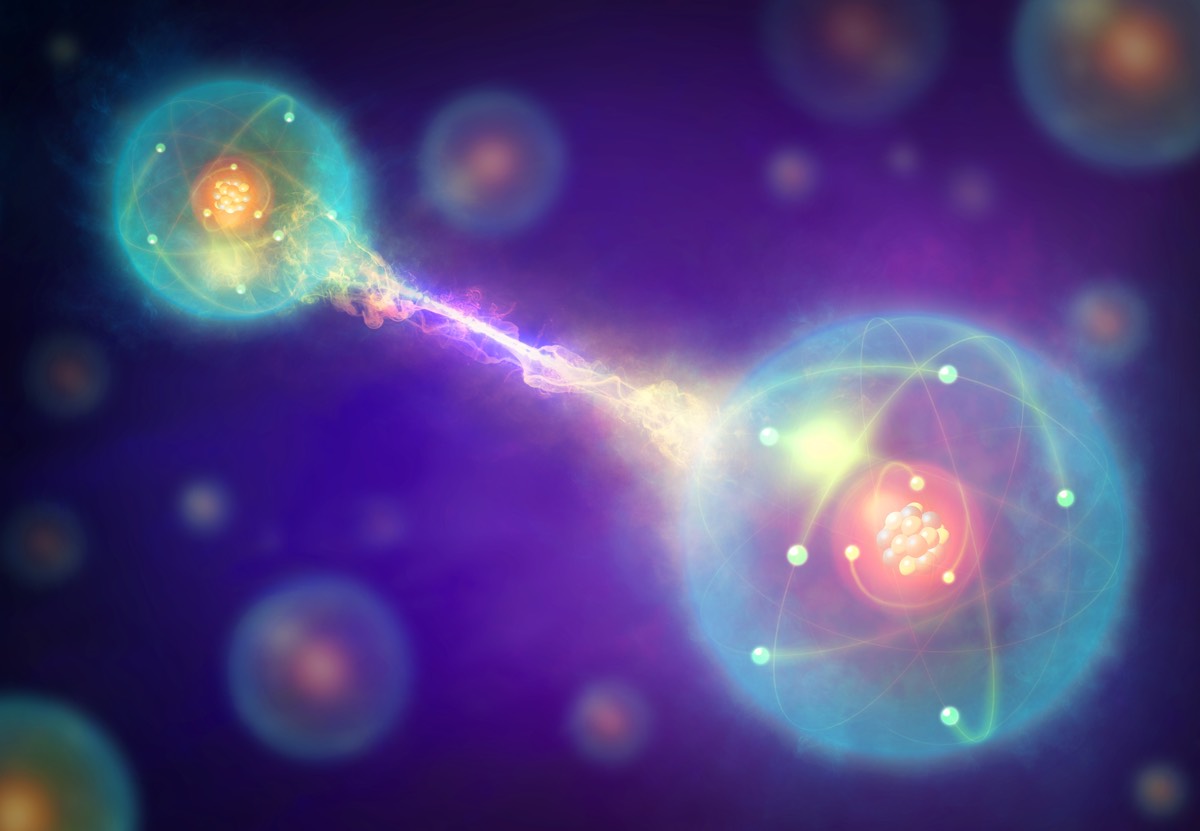Chinese Researchers Achieve Stunning Quantum-Entanglement Record

Scientists have just packed 18 qubits — the most basic units of quantum computing — into just six weirdly connected photons. That's an unprecedented three qubits per photon, and a record for the number of qubits linked to one another via quantum entanglement.
So why is this exciting?
All the work that goes on in a conventional computer, including whatever device you're using to read this article, relies on calculations using bits, which switch back and forth between two states (usually called "1" and "0"). Quantum computers calculate using qubits, which similarly waver between two states but behave according to the weirder rules of quantum physics. Unlike conventional bits, qubits can have indeterminate states — neither 1 nor 0, but a possibility of both — and become oddly connected or entangled, so that the behavior of one bit directly impacts the other. This, in theory, allows for all sorts of calculations that regular computers can barely pull off. (Right now, however, quantum computing is in its very early experimental stages, with researchers still testing the waters of what's possible, as in this study.)
The achievement, according to Sydney Schreppler, a quantum physicist at the University of California, Berkeley who was not involved in the research, was likely only possible because the team at the University of Science and Technology of China (USTC) managed to pack so many qubits into so few particles. [6 Weird Facts About Gravity]
"If the goal is to make 18, the way groups … would have done that in the past is to make 18 entangled particles with one [qubit] each," she said. "It's going to be a slow process."
It takes "many seconds" to entangle just the six particles used in the experiment, she said — already an eternity in computer time, where a new entanglement process must begin for each calculation. And each additional particle added to the entanglement takes longer to join the party than the last, to the point that it would be completely unreasonable to build an 18-qubit entanglement, one qubit at a time.
(There are plenty of quantum experiments involving more than 18 qubits, but in those experiments, the qubits aren't all entangled. Instead, the systems entangle just a few neighboring qubits for each calculation.)
Get the world’s most fascinating discoveries delivered straight to your inbox.
To pack each of the six entangled particles (photons, in this case) with three qubits, the researchers took advantage of the photons' "multiple degrees of freedom," they reported in a paper that was published June 28 in the journal Physical Review Letters and is also available on the server arXiv.
When a qubit is encoded into a particle, it's encoded into one of the states the particle can flip back and forth between — like its polarization, or its quantum spin. Each of those is a "degree of freedom." A typical quantum experiment involves just one degree of freedom across all the particles involved. But particles like photons have many degrees of freedom. And by coding using more than one of those at the same time — something researchers have dabbled in before, but not to this extreme, Schreppler said — a quantum system can pack a lot more information into fewer particles.
"It's as though you took six bits in your computer, but each bit tripled in how much information it could hold," Schreppler said, "and they can do that pretty quickly and pretty efficiently."
The fact that the USTC researchers pulled off this experiment, she said, doesn't mean quantum computing experiments elsewhere will start to involve many more degrees of freedom at a time. Photons are particularly useful for certain kinds of quantum operations, she said — most importantly, quantum networking, in which information is transmitted among multiple quantum computers. But other forms of qubits, like those in the superconducting circuits Schreppler works on, might not take to this kind of operation as easily.
One open question from the paper, she said, is whether all of the entangled qubits interact equally, or whether there are differences between qubit interactions on the same particle or qubit interactions across different degrees of freedom.
Down the road, the researchers wrote in the paper, this sort of experimental setup might allow for certain quantum calculations that, until now, had been discussed only theoretically and had never been put into action.
Originally published on Live Science.

 Live Science Plus
Live Science Plus





